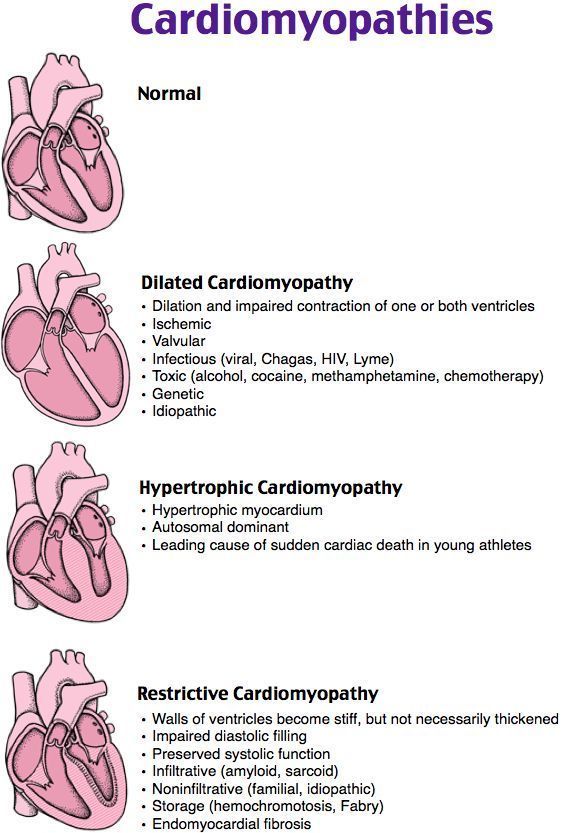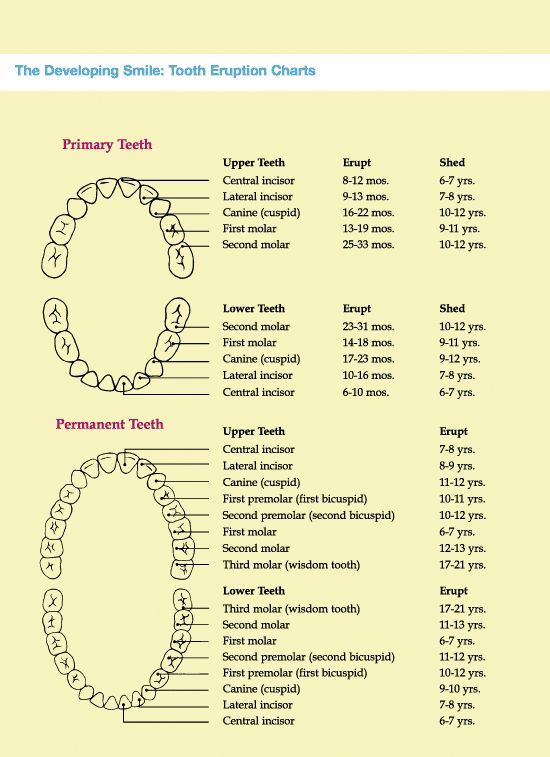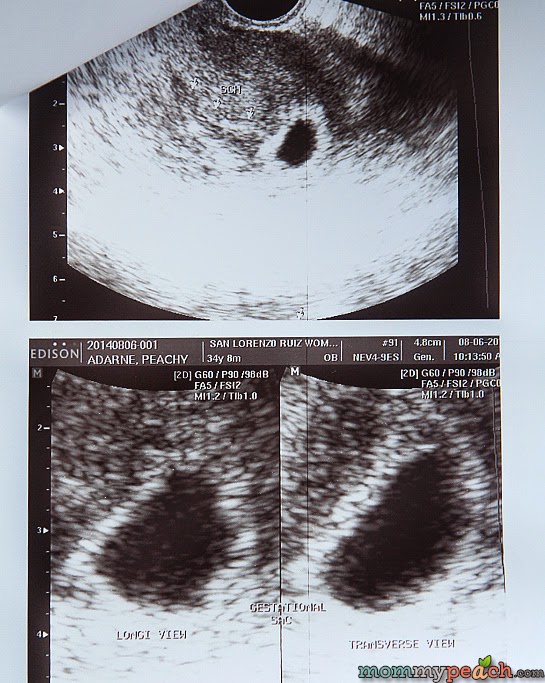Contractions not dilated
Why Is My Cervix Not Dilating? (In the First Stages of Labor)
Cervix dilation is one of the earliest signs that the birth of your baby is imminent. As you approach your due date, your doctor will check your weekly visits to see if you are dilated. Dilation begins once you have lost your mucus plug and cervical effacement has occurred. You may also experience a bloody show, a mix of blood and mucus when you lose your mucus plug.
There are three stages of labor: latent labor, active labor, and the delivery of the placenta, which is often glossed over when discussing labor.
As labor progresses, so will cervical dilation, from 1 cm, roughly the size of a blueberry, to 10 cm, the size of a bagel.
More: Labor Complications
Dilation During The 3 Stages of Labor:
- Latent Labor (the first stage of labor 1- 9 cm dilated)
- Active Labor (the second stage of labor 10 cm dilated)
- Placenta Delivery (the third stage of labor)
The first stage of labor could take several weeks, and you may stay dilated at only 1 or 2 centimeters for several ob-gyn visits in a row! When dilation fails to progress, women often wonder why is my cervix not dilating? Fortunately, there are many reasons why it may seem there is a failure to progress in labor. We will break down the various reasons for the cervix not dilating in the coming sections.
Failure to Progress in Labor
When labor fails to progress, it means your cervix is not dilating, and your baby is not descending. When this happens, your health care provider will likely assess what are known as the Three Ps.
- The Passenger (the size of the baby and his position in the uterus)
- The Powers (the efficiency of your contractions)
- The Passage (the size and shape of your pelvis)
In early labor, these three elements work together to progress towards the active phase of labor. If one of these elements is not aligned, the latent phase of labor may not progress as quickly or smoothly as mom and doctor would like.
More: Labor Complications
Cephalopelvic Disproportion (The Passenger)
Cephalopelvic Disproportion (CPD) occurs when the baby’s head is too large to fit through the women’s pelvis. The condition is considered rare and can only be fully diagnosed during labor, and 70% of pregnant women are able to deliver vaginally and without major complications.
Sometimes Cephalopelvic Disproportion may be suspected before labor in late pregnancy if your doctor’s measurements indicate the baby will be large.
If CPD is suspected, but the baby's head has engaged, you can still attempt a vaginal birth. Your doctor and nurses will monitor the labor with a labor graph, and if there are signs that the baby is in distress, an emergency cesarean may be performed. Likewise, a planned cesarean may be offered if the head hasn't engaged toward the end of labor or your doctor suspects CPD may be a concern before labor.
Inefficient Contractions (The Power)
Another reason your labor may not be progressing could be because your cervix is dilating slowly or has stopped dilating. Once labor begins, regular contractions will occur every 2 to 3 minutes. Your doctor will also assess how strong the labor contractions are by palpating your abdomen: the firmer it feels during contractions, the more likely they are to be effective.
If your contractions become too intense, you can request an epidural to help with the pain.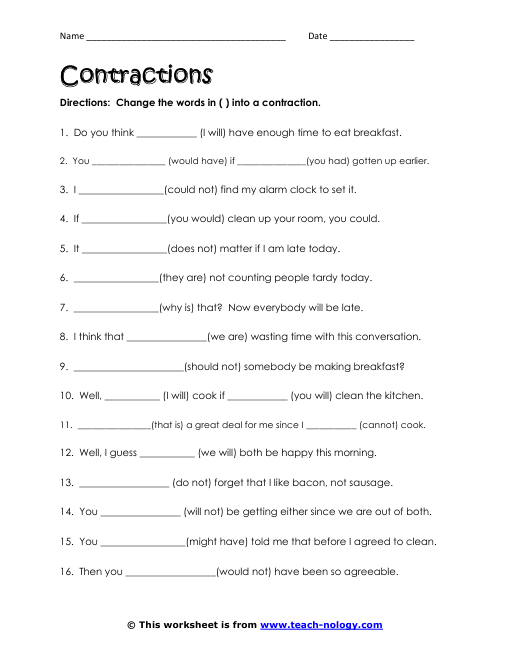 Keep in mind; however, it could be an hour or more after you request it before you are able to receive pain relief. Additionally, not all women and pregnancies can receive an epidural, so be sure to discuss the specifics with your doctor long before labor starts.
Keep in mind; however, it could be an hour or more after you request it before you are able to receive pain relief. Additionally, not all women and pregnancies can receive an epidural, so be sure to discuss the specifics with your doctor long before labor starts.
If you have begun having contractions but they are widely spaced, and their strength indicates they're unlikely to be effective, your doctor may use one or two techniques to speed up labor, known as augmenting labor.
First, they may artificially rupture the membranes if it hasn’t happened naturally. The rupturing of the membranes is also known as when your water breaks.
If this procedure fails to further dilation and the cervix opens only minimally. In that case, you may be given the drug oxytocin to increase the strength and frequency of contractions, also known as labor induction. It is more common for first-time moms to need an induction to produce uterine contractions than those who have experienced labor before.
Initially, a small dose is given and then increased over time until you're having three or four moderately strong contractions every 10 minutes. You’ll have continuous electronic fetal monitoring to ensure that the baby is not distressed by the sudden onset of stronger contractions if this is done.
If your labor is still not progressing several hours after the drugs have been started, then a cesarean may be recommended.
More: Cesarean Sections
Posterior Presentation (The Passage)
The best position for your baby in labor is an occiput-anterior position with the back of the head (occiput) facing your front. If the back of the head faces your back (occipito-posterior), this can make it hard for the baby to turn and move down the birth canal and can prolong labor. The doctor may suggest that you change positions to encourage the baby to turn. If the baby fails to rotate, forceps or vacuum may be needed to aid the delivery.
A gynecoid pelvis is a name given to a pelvis that has a circular shape. The generous proportions of this more typical "female-shaped" pelvis provide room for the head to pass through during birth.
The generous proportions of this more typical "female-shaped" pelvis provide room for the head to pass through during birth.
An android pelvis is a term used to describe a pelvis with a more triangular shape. This reduces the room available for the baby's head to pass through and is more likely to cause problems during vaginal delivery.
The good news is that the obstetrics community states that the shape and size of your pelvis have no bearing on fertility or your ability to become pregnant.
Sources
- Cervix Dilation Chart: Stages of Labor (healthline.com)
- The 5 P’s of Normal Labour and Birth - Kiwi Families
- Cephalopelvic Disproportion: Signs, Causes, and Potential Risks (flo.health)
- Epidural Pros and Cons: Should I Get One During Labor? (healthline.com)
- Premature rupture of membranes: MedlinePlus Medical Encyclopedia
- Do you know what your pelvis type is? (modernfertility.com)
A gynecoid pelvis is the name given to a pelvis that has a circular shape. The generous proportions of this more typical "female-shaped" pelvis provides room for the head to pass through during the birth.
The generous proportions of this more typical "female-shaped" pelvis provides room for the head to pass through during the birth.
Android pelvis
An android pelvis is the term used to describe a pelvis that has a more triangular shape. This reduces the room available for the baby's head to pass through and is more likely to cause problems during vaginal delivery.
Prodromal Labor - American Pregnancy Association
Prodromal labor is often called “false labor,” and is somewhere in between Braxton Hicks contractions and active labor contractions. Prodromal labor is a part of labor, occurring before active labor but it does not progress toward delivery.
“Prodromal” comes from a Greek word meaning “precursor.” This is a great explanation for this type of labor since it typically comes hours, days, or weeks before active labor begins.
Prodromal labor consists of contractions that can be fairly regular (between 5-10 minutes apart) and can be painful like active labor contractions, more so than Braxton Hicks contractions. Typically each contraction will last just shy of one minute.
Typically each contraction will last just shy of one minute.
These contractions are preparatory. It is suggested that they may help encourage the baby into a suitable birthing position, that they prepare the muscles, ligaments, and pelvis for active labor, and they may help prepare the mother for what is soon coming: active labor.
How can I tell the difference between prodromal and active labor contractions?
Though prodromal labor contractions come at fairly regular intervals and may be more painful than uncomfortable, there is often a break between these contractions and active labor. Prodromal contractions do NOT:
- advance labor
- increase in intensity
- increase in frequency
- cause continuing dilation or effacement of the cervix (it may affect it to some degree)
Will I be able to tell them apart without an exam by my healthcare provider?
It is not always easy to determine at home whether what you are experiencing is the “real thing” or not. Prodromal labor contractions may happen very close together (say, every 5 minutes) and may be more painful than the Braxton Hicks contractions you’ve already been through.
Prodromal labor contractions may happen very close together (say, every 5 minutes) and may be more painful than the Braxton Hicks contractions you’ve already been through.
For women who have experienced prodromal labor before, they may be able to sort out if they’re experiencing the real deal. However, if it is your first pregnancy or if you have not gone through prodromal labor in previous pregnancies, it might take a trip to the doctor to be sure.
Most healthcare providers will begin by collecting information on the timing of your contractions if they’ve increased in intensity, and how long they have been going on for (so make sure you write it down!). The doctor or midwife will likely perform a pelvic exam to understand if your cervix has begun to dilate. If there is no sign of dilation, or if it is the same as the last exam or a very small change, then you are likely experiencing prodromal labor.
I’m embarrassed to call my doctor/midwife because I’m not sure if it’s the real thing…what should I do?
Call your doctor/midwife! If it’s between suffering from a little embarrassment and having an accidental home birth without a healthcare professional, it seems like a pretty easy choice. Like stated above, it can be difficult, if not impossible, to tell the difference between active and prodromal labor without a pelvic exam by your healthcare provider.
Like stated above, it can be difficult, if not impossible, to tell the difference between active and prodromal labor without a pelvic exam by your healthcare provider.
Remember – your healthcare provider hears this question all the time. You are not alone!
What are signs that prodromal labor might be progressing into active labor?
Like we mentioned above, it is not always possible to tell when prodromal contractions have become active labor contractions without a pelvic exam. However, if the contractions begin happening at very regular intervals under 5 minutes apart, they last for longer than 1 minute each, and this happens consecutively for over 1 hour, it may be time to call your healthcare provider. He or she can let you know at that time if you need to proceed to the birthing location or just to have an appointment.
How can I cope with prodromal labor?
During prodromal labor contractions, it is important to make sure you rest. Since there is the potential for active labor to occur not too much later, it is suggested that you conserve your energy for the actual labor and delivery.
Here are things you can try to do to keep your mind off of the contractions:
- Take a warm shower (not bath in case you are dilated at all).
- If it begins at night, try to get some sleep.
- Take a nap.
- Munch on some snacks.
- Drink water and/or a sports drink.
- Try light activity, such as packing your bag for the hospital.
- Take a short, leisurely walk.
- Do things that calm you: read a book, drink safe herbal tea, listen to music, meditate, etc.
Try NOT to:
- Do more exhausting tasks like cooking, cleaning, or exercising.
- Feel bad asking for help! You don’t have to wait until after your baby arrives to ask for assistance.
Want to Know More?
- Braxton Hicks Contractions: Causes and Treatment
- False Labor
- Pregnancy Pains
Compiled using information from the following sources:
1. Sutter Health: Pre-Labor vs. True Labor.
2. Experimental Wifery: How To Survive Prodromal Labor.
3. Caritas Center for Women’s Health: For Your Information VI – Is It Labor?
4. Beth Curtis, retired Midwife. 2005.
How to distinguish real contractions from training ones?
Shemyakina Natalya Nikolaevna, head of the obstetric department of the Leleka maternity hospital will help you figure it out.
Training contractions, or as they are also called, fake, or Braxton-Hicks contractions, are irregular contractions that do not have increasing intensity. The uterus may tone up, but normally, it should pass quickly.
For example, the tone appeared once in half an hour and the uterus relaxed rather quickly. Then the tone reappeared only after two hours and again passed. These are training contractions, they do not increase in intensity and do not become more frequent.
Training bouts are physiologically provided by our body. So the uterus is preparing to do the hard work in the process of childbirth. Normally, training contractions appear in terms of pregnancy close to childbirth - from the 37th week of pregnancy.
Normally, training contractions appear in terms of pregnancy close to childbirth - from the 37th week of pregnancy.
The appearance of training contractions in the early stages of pregnancy is not the norm
The uterus can tone up with an active lifestyle, physical activity, with a change in body position, but this tone should quickly pass. Normally, the uterus should not often come into tone. And even more so, contractions, as such, should not be until the 37th week of pregnancy.
Braxton Hicks contractions in the early stages are a threat of preterm labor. If a woman has contractions periodically during the day: after an hour, after 2, then again after an hour, (even if they are not regular), for periods up to 37 weeks, such a tone should alert the expectant mother.
Because this is not the norm, but the threat of premature birth. This is an occasion to contact a specialist and change your rhythm of life, put on a bandage. The causes of premature birth are most often internal, caused by hormonal disorders and a violation of the physical health of a woman. But significant physical activity and stress can also cause premature birth.
But significant physical activity and stress can also cause premature birth.
Labor pains
Unlike training contractions, labor pains are regular. The uterus comes to tone first once every 15 minutes, and after a while - once every 7-10 minutes. Contractions gradually become more frequent, longer and stronger. And already occur every 5 minutes, then 3 and finally every 2 minutes.
True labor pains are contractions every 2 minutes, 40 seconds. If within an hour or two the contractions intensify - pains that begin in the lower abdomen or in the lower back and spread to the stomach - most likely, these are real labor pains.
Training contractions are NOT so much painful as unusual for a woman. When the expectant mother sees how the stomach comes into tone, its shape changes and it becomes dense, like an inflated ball. This might scare you a little. But a woman must understand that in real, labor pains, there must be a clear periodicity, intensification and acceleration over a certain period of time. Real fights never stop, but practice fights do. The uterus then comes to tone, then relaxes.
Real fights never stop, but practice fights do. The uterus then comes to tone, then relaxes.
Often women confuse contractions with tone, which is caused by other physiological processes in the body. For example, increased intestinal peristalsis, intestinal infections, colic, etc.
What else should alert a woman?! If within an hour or two the uterus periodically comes into tone and mucous, bloody (streaked with blood or brown) discharge appears, then most likely there are structural changes in the cervix - it opens. Also an important sign to seek help is the discharge of the mucous plug long before childbirth. Her departure in terms of childbirth, a week or two before childbirth is normal.
Tracking labor pains
There are several methods for determining the types of contractions. A woman can do this herself, writing down the frequency and duration of contractions on paper or tracking them using special programs for a computer and phone. Or you can contact a doctor at antenatal clinic or at the maternity hospital, where a specialist will conduct fetal monitoring (fetal CTG). With the help of 2 sensors, the fetal heartbeat, uterine contractions are monitored and it is determined whether these are training contractions or labor.
With the help of 2 sensors, the fetal heartbeat, uterine contractions are monitored and it is determined whether these are training contractions or labor.
When should I go to the maternity hospital?
If within an hour or two there is an increase and intensification of pain, its intensity increases, the frequency of contractions is clear and regular, you can go to the maternity hospital. A woman can make a mistake, but it’s better to come and make sure for sure whether these are labor or training contractions.
If the amniotic fluid breaks, you can slowly pack up and go to the maternity hospital. Since, normally, after this labor activity should begin.
The main thing is that a woman should not panic. The latent phase of labor can last 8-10 hours until the cervix is fully dilated. Labor activity does not proceed in 30 seconds. In the process of labor, the cervix of the uterus in women giving birth for the first time opens about 1 cm in an hour. She needs to open up to 10 cm, that is, a woman has about 10:00 by the time the baby is born.
She needs to open up to 10 cm, that is, a woman has about 10:00 by the time the baby is born.
Happy pregnancy and childbirth!
How to prepare for childbirth with a cat?
How animals are born: through the eyes of a veterinary obstetrician.
How to prepare for the birth of a dog, cat?
Physiology of childbirth in dogs: A to Z
In this article, we will tell you how normal childbirth should proceed, when it is worth it and when you should not worry, in which cases you need to immediately go to the clinic, and when you just have to wait.
Do I need to go to the vet or call the veterinarian?
Childbirth in a cat is a normal and natural process. Human intervention should be only when non-intervention can lead to a problem. Healthy animals give birth on their own and do not need human help. This does not mean that childbirth should not be observed, because childbirth is an unpredictable process, and, unfortunately, sometimes something can go wrong.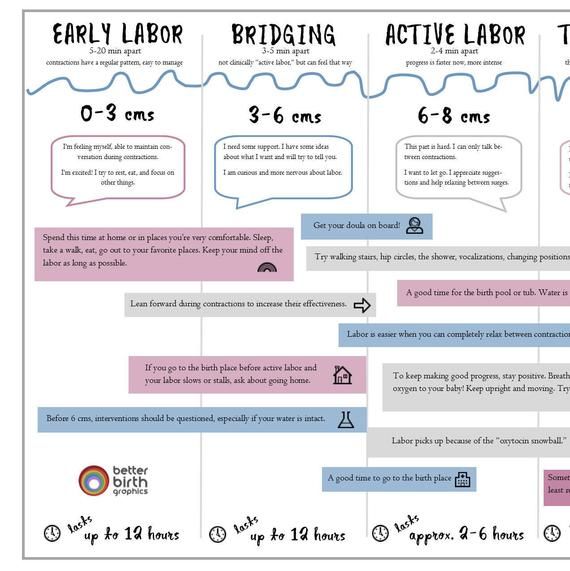
How are births different in pets?
Childbirth in cats
Cats usually go into labor faster than dogs.
The harbingers of childbirth take them only a few hours, the birth itself and the intervals between babies pass faster. However, in the event of complications or abnormal births, they are more likely to end in a caesarean section in cats than in dogs.
An important point to be aware of!
Remember that even normal childbirth is the strongest stress for the body. But your pet still gives birth, not you, so you should not increase stress by infecting your pet with your nervousness. No matter how scary what is happening to you, keep yourself in control, talk to the animal in a calm and confident voice, know that it is from you that she expects support. Prepare for childbirth in advance: read the literature, enlist the help of a doctor, find out the number of a 24-hour clinic to be fully equipped.
Do not panic! Animals sense your condition and may become frightened, which may cause them to hide from you. Create the most calm and comfortable environment for the animal. You should not grab him and rush to give birth to the clinic if there is no reason for this. The trip is an additional stress, which, especially in cats, can lead to a stop in labor. If you are very worried and not confident in your abilities, it is better to invite a doctor to your home. You can call the clinic and get a doctor's advice.
Create the most calm and comfortable environment for the animal. You should not grab him and rush to give birth to the clinic if there is no reason for this. The trip is an additional stress, which, especially in cats, can lead to a stop in labor. If you are very worried and not confident in your abilities, it is better to invite a doctor to your home. You can call the clinic and get a doctor's advice.
We will tell you how a normal, uncomplicated birth proceeds.
How do you know when an animal is due to give birth?
There are even special online calendars on the Internet, which are very convenient. Enter the date of mating and get the estimated date of birth. If you are not sure or do not know the exact date, you can do an ultrasound to determine the date. A good ultrasound diagnostician determines the period with an accuracy of up to a week.
However, even the best doctor can make a mistake with the number of fruits. The fact is that the uterus in animals is bicornuate, shaped like the letter V, therefore, during the study, one can easily make a mistake by counting the same fetus twice. The exact number of babies can only be found out with an x-ray, but this method is not recommended for pregnant women. If the owner insists, then he takes the risks for the consequences.
The exact number of babies can only be found out with an x-ray, but this method is not recommended for pregnant women. If the owner insists, then he takes the risks for the consequences.
Harbingers of labor and symptoms of imminent labor in cats…
External manifestations of imminent labor are called precursors and are similar in dogs and cats.
- Animal behavior,
- lactation,
- appetite,
- frequent urination,
- prolapse of the abdomen,
- Loop softening,
- thermometry.
A week before birth, the behavior of the animal changes several . This is due to the growth of the hormone estrogen, which causes contraction of the muscle fibers of the uterus (contraction). This increases anxiety and encourages the animal to build a nest. Dogs begin to dig, cats begin to make a nest. It is recommended to provide the animal with a box or a house where it will feel safe.
Lactation - does not always appear and not for everyone. This is not an entirely accurate sign of the harbingers of childbirth. In some dogs, it can appear from the 40th day of pregnancy, and in someone - only after childbirth.
This is not an entirely accurate sign of the harbingers of childbirth. In some dogs, it can appear from the 40th day of pregnancy, and in someone - only after childbirth.
Appetite. In general, appetite decreases before parturition, or may become selective, i.e., the animal may become more fussy about food. There are animals that eat even during childbirth, but these are exceptional cases, of course. And some people completely lose their appetite before childbirth, which is a very bad symptom and can lead to ketoacidosis . If the animal does not eat for more than a day, and childbirth does not begin, you should consult a doctor here. So, everything is individual.
Frequent urination - normal before childbirth, usually associated with increased uterine contractions. Urination in the wrong places can be an involuntary release of urine. Sometimes the animal simply does not have time to "run" or wait until the walk.
" Abdominal prolapse " - is considered perhaps the surest sign of imminent childbirth, but it is not associated with the harbingers of childbirth, but with an increase in the mass of the fetus. The most active weight gain occurs precisely in the last weeks, and the growth of babies continues until the very birth, so the stomach drops under the gravity of the uterus. The more fruits in it, the more pronounced prolapse of the uterus. If the animal has only one fetus, then uterine prolapse may not be noticeable at all.
The most active weight gain occurs precisely in the last weeks, and the growth of babies continues until the very birth, so the stomach drops under the gravity of the uterus. The more fruits in it, the more pronounced prolapse of the uterus. If the animal has only one fetus, then uterine prolapse may not be noticeable at all.
Loop softening - it is preparing for childbirth, so it becomes softer and more pliable a couple of days before childbirth.
One of the most accurate predictors of labor is Thermometry . It is of key importance in determining the period of childbirth.
For control, it is desirable to measure the temperature 1-2 times a day, starting from the 55th day of pregnancy. When we know how it usually is, we can determine when they will start. A drop in temperature by 2 degrees (up to 37) - usually indicates the imminent onset of childbirth.
Physiology of childbirth
In ripe fruits, cortisol (stress hormone) is formed, which crosses the placental barrier, it stimulates the production of prostaglandins in the mother. Prostaglandins dissolve the corpus luteum of pregnancy, which produces the hormone of pregnancy - progesterone. The amount of progesterone drops sharply and labor begins.
Prostaglandins dissolve the corpus luteum of pregnancy, which produces the hormone of pregnancy - progesterone. The amount of progesterone drops sharply and labor begins.
In addition, the amount of estrogens increases, which increase the sensitivity of receptors to oxytocin. Increased contraction of the uterus. The hormone relaxin, produced by the placenta, stimulates the dilatation of the cervix and prepares it for the expulsion of the fetus.
Prolactin and lactation hormones
The hormone prolactin is the hormone of "maternal behavior" and the hormone of lactation.
Stages of childbirth in detail.
Childbirth is divided into 3 stages, each stage has its own time interval.
The spacing and duration of labor is unpredictable, and past labor is not an indicator. Once an animal can give birth in a couple of hours, another time - the birth will stretch for almost a day and both options can be the norm.
Stage 1 - harbingers of childbirth. This is the most painful stage for the animal and the owner. Behavior changes, as the uterus contracts, but we do not see this in the stomach. The dog (cat) breathes heavily and digs or builds a nest. The period can take up to a day. To confirm the onset of labor in dogs, a progesterone test can be done. Its decrease confirms the onset of labor.
This is the most painful stage for the animal and the owner. Behavior changes, as the uterus contracts, but we do not see this in the stomach. The dog (cat) breathes heavily and digs or builds a nest. The period can take up to a day. To confirm the onset of labor in dogs, a progesterone test can be done. Its decrease confirms the onset of labor.
Exception: In cats, progesterone is also produced by the placenta, so the drop in progesterone will not be as significant as in dogs. A strong decrease in cats occurs only the next day after birth.
Similarly, in the case of the "syndrome of one puppy / kitten" - one fetus may not cause such a cascade of reactions, as a result of which the pregnancy may be delayed. And there is no decrease in temperature, since progesterone does not fall and childbirth does not begin for a long time.
Main signs of imminent labor:
- Anxiety, tremor, anorexia. Dilated pupils.
- Rapid breathing, sometimes with open mouth.
- Digging, nest building.
- The temperature is about 36.7–37. The entire 1st stage of labor is preserved. By the 2nd stage, it will return to normal.
- Vocalization in cats. Walking in circles, licking.
- During this period, the cervix opens inside. There is no push. There may be weak contractions that are mistaken for attempts.
- Another external manifestation of this stage of labor is the discharge of the mucous plug. It comes out when the cervix opens, and thick mucous secretions always come out of the loop. It looks like a long hanging thread from a loop.
In cats, due to their cleanliness and immediate licking of anything that might stain them, it can be difficult to notice the cork coming off. But often 1-24 hours before delivery, it can be noticed.
Stage 2 - expulsion of the fetus.
Temperature returns to normal. The fruit is getting ready to come out. The first vesicle that is visible is the allantois, filled with a dark brown liquid - that is, the fetus enters the pelvic canal. Then the bubble bursts, amniotic fluid pours out.
Then the bubble bursts, amniotic fluid pours out.
The fetus moves through the pelvic canal, causing the Ferguson reflex, which results in contractions of the abdominal muscles
The animal is pushing hard, the uterus and abdomen are contracting .... Finally! A baby is born.
15-120 minutes is the usual interval between fruits. Often - the intervals are short at first, by the end of childbirth - longer, as the uterus and the animal itself get tired. If labor is delayed, then it is allowed to gently palpate the dorsal (upper, which is closer to the back) vault of the vagina, imitating the fetus, which should cause muscle contraction and stimulate labor.
FAQ,
causing great excitement of the owners:
How should a kitten walk correctly: head or legs?
In animals, both options are normal. In 60% of cases, cephalic presentation occurs, with which childbirth usually goes a little easier, presumably because in this case, the movement of the fetus is facilitated, as it goes along the coat, and not against the coat, as in the pelvic.
When the baby is born, the mother licks it, frees it from the membranes and bites the umbilical cord. If for some reason mom does not do this, you will have to help her. Tear open the shell, remove the liquid from the nose and mouth with a syringe or aspirator, shake the baby, gently holding him by the withers to shake out the remaining liquid. Cut the umbilical cord, tie it with a thread, or simply squeeze the tip of the umbilical cord with your fingers, as if crushing it.
Respiratory fluid must be removed BEFORE tying the cord!
Important! Almost all new owners make the same fatal mistake! They begin to fuss, trying to tie the umbilical cord as soon as possible, instead of removing fluid from the respiratory tract. It is not right! First of all - remove the liquid! In nature, no one ties up the umbilical cord with threads, and a few drops of blood falling from it are not at all scary! The most important thing here is not to let the amniotic fluid choke! At the moment when we cut the umbilical cord, there should no longer be fluid in the airways, because after that the baby breathes actively and, accordingly, draws into the lungs all the liquid that remains in the airways.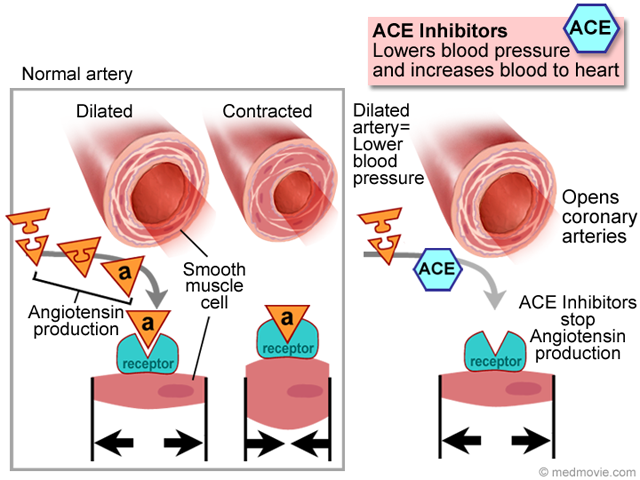 The baby may choke or develop aspiration pneumonia in a few days, which can lead to death.
The baby may choke or develop aspiration pneumonia in a few days, which can lead to death.
3rd stage of labor - expulsion of the placenta.
The second and third stages of the cat's birth (the expulsion of the fetus is followed by the expulsion of the placenta) replace each other until the birth is over, that is: the fetus is born - the placenta comes out - the fetus is born - the placenta comes out ..
There are times when the placenta does not come out immediately. The placenta may rupture and remain inside. Then it does not come out immediately, but after 5-15 minutes. This causes great concern to the owner. But often the owners simply do not notice her coming out, she is born or too quickly and the animal eats her before they saw her. Or later, that is, with one of the following babies. Since the uterus in animals is bicornuate, has the shape of the letter V, and babies are born in turn from each horn, the placenta may come out not with the next puppy (because it comes from another horn), but through one (that is, from the horn with the remaining placenta ).
Also, twins are possible in animals, then there can be one placenta for two.
According to statistics, a very small percentage of metritis is associated with the placenta remaining in the uterus. If after childbirth the animal does not feel well or the discharge from the genital tract does not stop for a long time, an ultrasound scan should be done to exclude retention of the placenta and endometritis.
Should I give the placenta to eat?
In nature, of course, the animal eats it completely. Partly because it is a meat, that is, a protein and very nutritious product, and in nature food is not scattered, and secondly: due to the fact that the placenta is rich in substances that stimulate the further process of childbirth and even care for offspring.
However, eating a lot of afterbirth causes diarrhea. One is enough. If the animal has problems with the gastrointestinal tract, you can not let the afterbirth be eaten at all.
How to understand that all the fruits were born?
The animal calms down, breathing normalizes, pupils of normal size. Actively engaged in kids, can ask for food. It can rumble and show its relaxation with all appearance. The abdomen decreases in size, soft on palpation.
Actively engaged in kids, can ask for food. It can rumble and show its relaxation with all appearance. The abdomen decreases in size, soft on palpation.
If the birth is not over yet: breathing is frequent, the pupils are dilated, the animal pays little attention to children, tries to get away from them, worries, on palpation it strains the stomach, you can even feel the remaining fetus. We are waiting for 2 - 4 hours, if nothing happens - it is recommended to do an ultrasound. According to its results, the doctor can stimulate labor (if the fetus is alive and everything else is in order) or caesarean section (if pathologies are detected).
Important!! The use of oxytocin preparations on their own is categorically not recommended, as it can aggravate the situation, even lead to uterine rupture. Oxytocin should be calculated and administered only by a doctor!
Healthy babies and easy childbirth!
You can always consult with our doctors and call a doctor at home!
Veterinarian: Golneva Tatyana Nikolaevna
If you need to call a veterinarian at home, you can call 8 (499) 110-01-05,
the dispatcher will determine the amount of necessary assistance and agree on the time of the visit of a specialist to your pet.